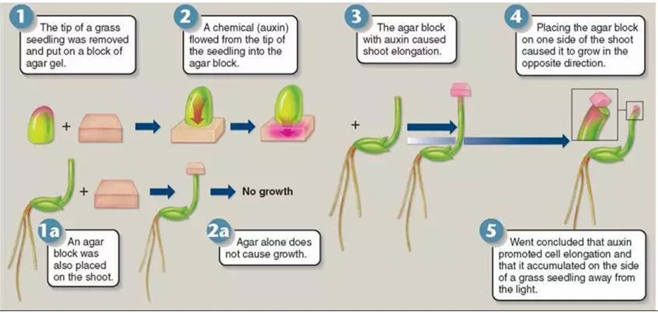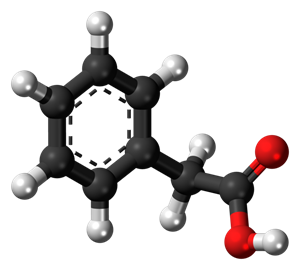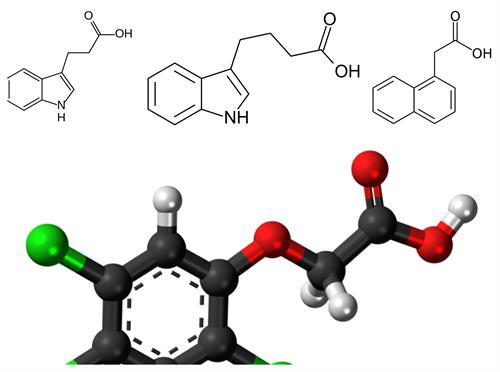
PUMPA - SMART LEARNING
எங்கள் ஆசிரியர்களுடன் 1-ஆன்-1 ஆலோசனை நேரத்தைப் பெறுங்கள். டாப்பர் ஆவதற்கு நாங்கள் பயிற்சி அளிப்போம்
Book Free DemoThe term auxin is derived from a Greek word auxin which means 'to grow'. Kogl and Haagen-Smith introduced it in the year 1931.
Auxins are hormones produced at the tips of stems and roots. From these sites they move to the zone of elongation.
In 1880\ observed unilateral growth and curvature in the coleoptiles of canary grass (Phalaris canariensis). From his observations he finally concluded that some ‘influence’ was transmitted from the tip of the coleoptile to the basal region. This ‘influence’ was later identified as Auxin by Went.
Went's experiment:
The prevalence and effect of auxins in plants was first demonstrated by a Dutch biologist Frits Warmot Went (1903-1990) by performing a series of experiments in Avena coleoptiles.

Went's experiment
The first experiment of Went:
During his first experiment he dissected the tips of Avena coleoptiles and observed that the tips did not grow due to the lack of an essential growth stimulator.
The second experiment of Went:
- In his second experiment he inserted the detached coleoptile tips on agar blocks and left them for an hour.
- After an hour he separated the tips and placed the agar blocks on the decapitated coleoptile.
- As a result of this he observed that the growth stimulated in the decapacitated coleoptile was due to some chemical which diffused from the cut coleoptile tips into the agar block.
From these series of experiments Went concluded that the chemical diffusing from the tip of coleoptiles was responsible for growth, and he named it as “Auxin” meaning ‘to grow”.
A video demonstrating and explaining Went's experiments
Natural Auxins:
Phenyl Acetic Acid (PAA) and Indole acetic 3 Acetonitrile (IAN) are natural auxins.

Phenyl acetic acid (PAA)
Synthetic auxins:
Indole 3 Butyric Acid (IBA), Indole-3-Propionic Acid, α-Naphthalene Acetic Acid (NAA), 2, 4, 5-T (2,4,5Trichlorophenoxy Acetic Acid) are some of the synthetic auxins.

Clockwise from top left: Indole-3-Propionic Acid, Indole 3 Butyric Acid (IBA), α-Naphthalene Acetic Acid (NAA), 2, 4, 5-T (2,4,5 Trichlorophenoxy Acetic Acid)
Reference:
https://commons.wikimedia.org/wiki/File:Phenylacetic_acid_molecule_ball.png
https://en.wikipedia.org/wiki/3-Indolepropionic_acid#/media/File:3-Indolepropionic_acid_skeletal.svg
https://en.wikipedia.org/wiki/Indole-3-butyric_acid#/media/File:Indole-3-butyric_acid_structure.svg
https://en.wikipedia.org/wiki/1-Naphthaleneacetic_acid#/media/File:Kwas_naftylooctowy.svg
https://upload.wikimedia.org/wikipedia/commons/1/1c/2%2C4%2C5-Trichlorophenoxyacetic-acid-3D-balls.png
https://schoolbag.info/biology/living/280.html